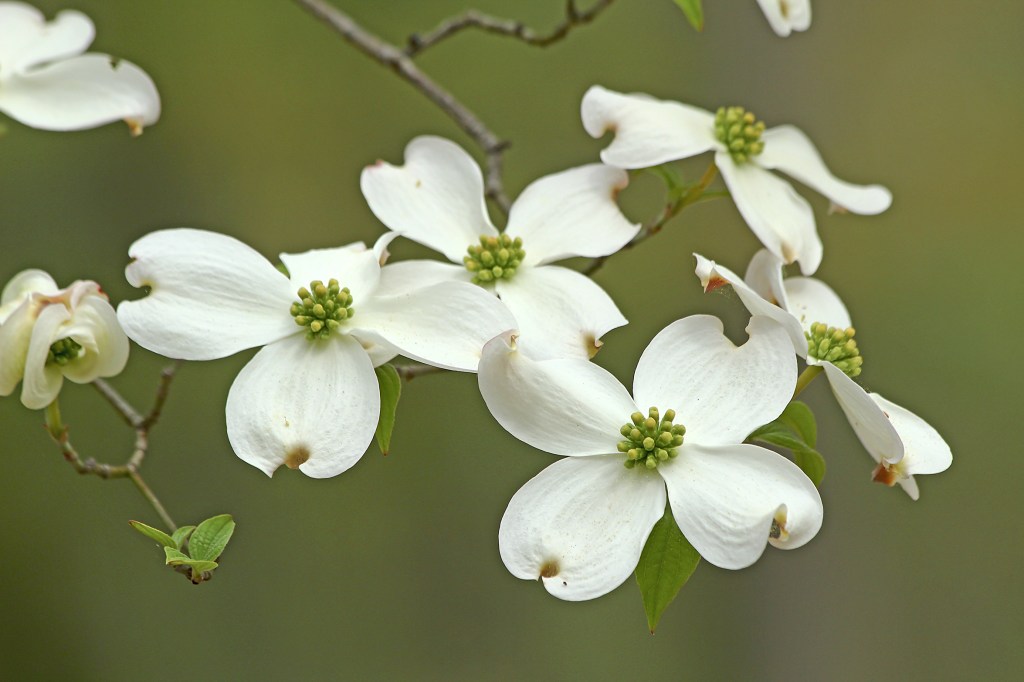ONE GARDENER TO ANOTHER: Cross-like flowers of the dogwood tree declare it’s spring
Published 6:45 am Monday, April 22, 2019

- While dogwoods can reach a height of between 15 to 30 feet, the trunk is short and the branches are long but thin, bent and twisted.
History was never my favorite subject in school. When I started culinary school, I remember being profoundly disappointed the first chapter was the history of the restaurant.
Surely, knowing where the first restaurant was established and by whom wasn’t going to grant me mad knife skills and the ability to make a sauce that would make people drool.
I have a better appreciation of history now. This is especially true when I am researching a particular plant. The first thing I do when getting to know a new botanical is look up where it is native to, as well as finding any fun facts, legends, myths or symbolism associated with it.
The dogwood tree has an interesting legend that started with a poem, and since it is Easter, it is a timely subject. The poem, author unknown, goes like this:
In Jesus’ time, the dogwood grew.
To a stately size and a lovely hue.
‘Twas strong and firm, its branches interwoven.
For the cross of Christ its timbers were chosen.
The legend goes on to say the dogwood’s petals tell the story of Jesus’ crucifixion. The four petals are in the shape of the cross. At the edge of each petal is a nail dent, stained red with blood; and in the center of the flower is a crown of thorns.
The tree being used for such a purpose caused it great distress. Jesus, nailed upon it, made the promise that from that moment forward, the tree would never again grow to such a size that it could be used for a cross.
To support the legend, while the tree can reach a height of between 15 to 30 feet, the trunk is short and the branches are long but thin and are bent and twisted. It is said the name dogwood came from dagwood and the Middle English word dagge, because the thin stems were used for making daggers or skewers.
The showy bracts are commonly mistaken for the flower. The bracts are actually modified leaves that encircle the actual flower, the crown of thorns. Bract color of the native dogwood is a creamy white, however, varieties of native dogwood and cultivated varieties can be pink or red. The dogwood begins blooming in early to mid-April and will last two to four weeks.
Besides the attractive spring flowers, the green foliage turns deeper green as the season progresses. It then puts on an impressive fall display, turning shades of red to purplish-red. They have adapted to live in full sun; however, they grow in the wild in shaded forests, making them a good choice for an understory tree. Trees grown in full sun will grow to the smaller side of the scale.
When selecting a tree, look for small holes at the base of the tree, indicating the presence of dogwood borers – one of the main causes of death to dogwoods. Container grown trees can be planted year-round, however, fall is the best time, as it allows the root system to establish before the stress of summer heat sets in. Dig the hole two to three times the width of the root ball and just as deep or slightly less than the depth of the root ball.
When watering newly planted dogwoods, thoroughly soak the root and surrounding area once or twice a week. Additional watering may be necessary if soil dries out faster. A good layer of mulch will help the soil retain moisture. Fertilizer is rarely necessary. Organic matter can be added during the planting process.
Prune dogwoods in early spring, while dormant, before the tree puts out new growth. Remove any dead or damage branches as well as branches that are crossing each other or rubbing together. Removing a few center branches will allow proper air circulation, reducing the chance of mold or mildew growth.
This beautiful ornamental landscape tree announces spring and provides year-round beauty. Until next week, happy Easter and happy gardening.
— Irland, a member of the Limestone County Master Gardeners, can be reached at kippirland@hotmail.com. For more information on the Limestone County Master Gardeners, visit http://mg.aces.edu/limestone.


